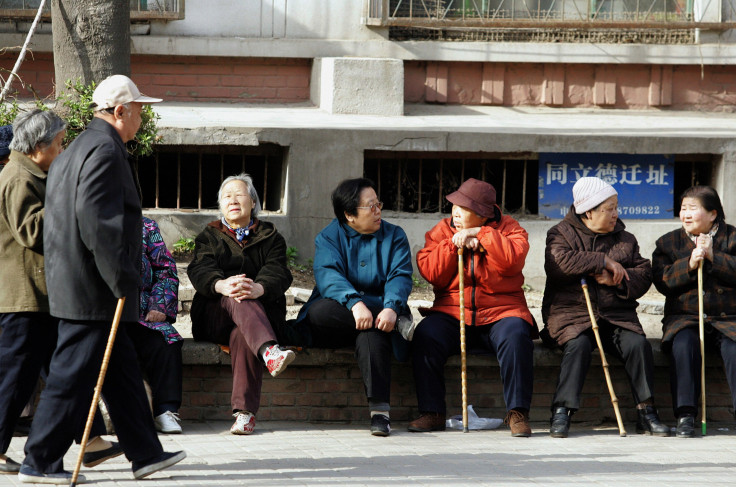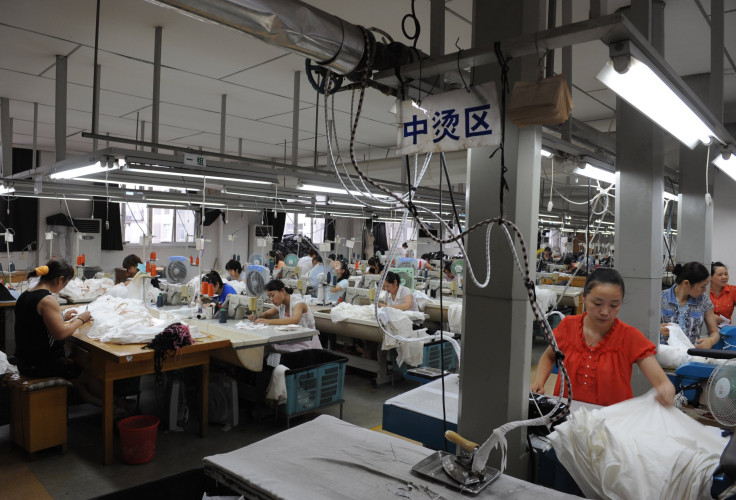China’s Working Age Population To ‘Fall Sharply’ By 2030, Adding To Concerns About Economic Growth And Aging Society

SHANGHAI — China’s working age population will shrink significantly in the next 15 years, according to new research by a top Chinese university, adding to worries about labor shortages and the challenges of funding an aging society.
The proportion of the nation's population aged between 16 and 59 years will fall from last year's 66.3 percent to just 56.9 percent by 2030, according to new data from the Population and Development Studies Center at Beijing's Renmin University. Meanwhile, the proportion of those over 60 (the current retirement age for men in China) will increase from 16.1 percent to 25.2 percent, the official Global Times reported.
The center's research showed that the number of working age people would fall by some 15 million over the next five years — from last year’s 911 million to 896 million in 2020 — before plunging a further 72 million over the subsequent decade, to 824 million by 2030. At the same time, the number of aging people would increase, at an even faster pace — rising from last year's 222 million to 253 million by 2020, and 365 million in 2030. (The Chinese government has said the country's total population is likely to hit 1.45 billion by 2030, compared to 1.37 billion in 2014.)
According to official data, China’s working age population began falling in 2012. As of last year, the nation's labor force had shrunk by 26 million from its peak. The phenomenon has already contributed to shortages of workers in some more affluent parts of China, even as the nation grapples with a slowing economy and layoffs in other areas. The southern city of Dongguan currently has a shortage of 200,000 workers, according to the Global Times — though some economists have suggested the shrinking labor force could help the authorities in the short term, by reducing employment pressure as China seeks to transition from labor-intensive manufacturing to an economy based more on high-tech industry and services.

Nevertheless, experts are concerned at the changing balance of the population structure — with worries that less working people will mean a shortfall in the pension funds needing to support the growing number of retired people.
"China's current demographic structure is severely distorted,” Professor Mu Guangzong of Peking University's Institute of Population Research told the Global Times. “This may hinder economic development as well as social stability in the long run.”
One reason for the predicted decline in China's working age population over the coming years is a sharp fall in the number of women of child-bearing age, officials have said. This is seen a result of the previous "one-child policy," which in some rural areas led to gender-selective abortions to ensure families had a male heir.
Late last year, the government announced it was scrapping the one-child policy, and allowing all Chinese families to have two children, in a move seen largely as a way of boosting the economy.
However, there are divergent opinions as to precisely how much this will boost the population, with many experts citing worries about the cost of education, and a lack of confidence in the nation's ability to fund retirement pensions and other welfare costs, as putting people off having more children.
The Chinese government has said it is planning to raise the retirement age — currently as low as 50 for some women — in the coming years, to help deal with the predicted shortfall in pension funds.
But Yi Fuxian, a U.S.-based academic who is a longtime critic of China’s family planning policies, told a forum in southern China last week that the country was caught in a "low fertility trap," and that an aging population would impede economic development, according to the Global Times. Yi, who has predicted a fall in China’s overall population in the coming decades, also told the New York Times recently that the aging population structure meant that, contrary to many predictions that China will soon become the world’s largest economy, the nation “will never overtake America's economy.”
But Wang Pei’an, China's vice-minister of health and family planning, said earlier this year that the government had no plan to abolish population controls completely, at least for the next 20-30 years. The government has said the reduction in the labor force will be offset by moves away from labor-intensive industry to a more creative economy. Yet some Chinese experts have warned that a smaller number of young people could also hit the country's ability to innovate.
© Copyright IBTimes 2024. All rights reserved.












